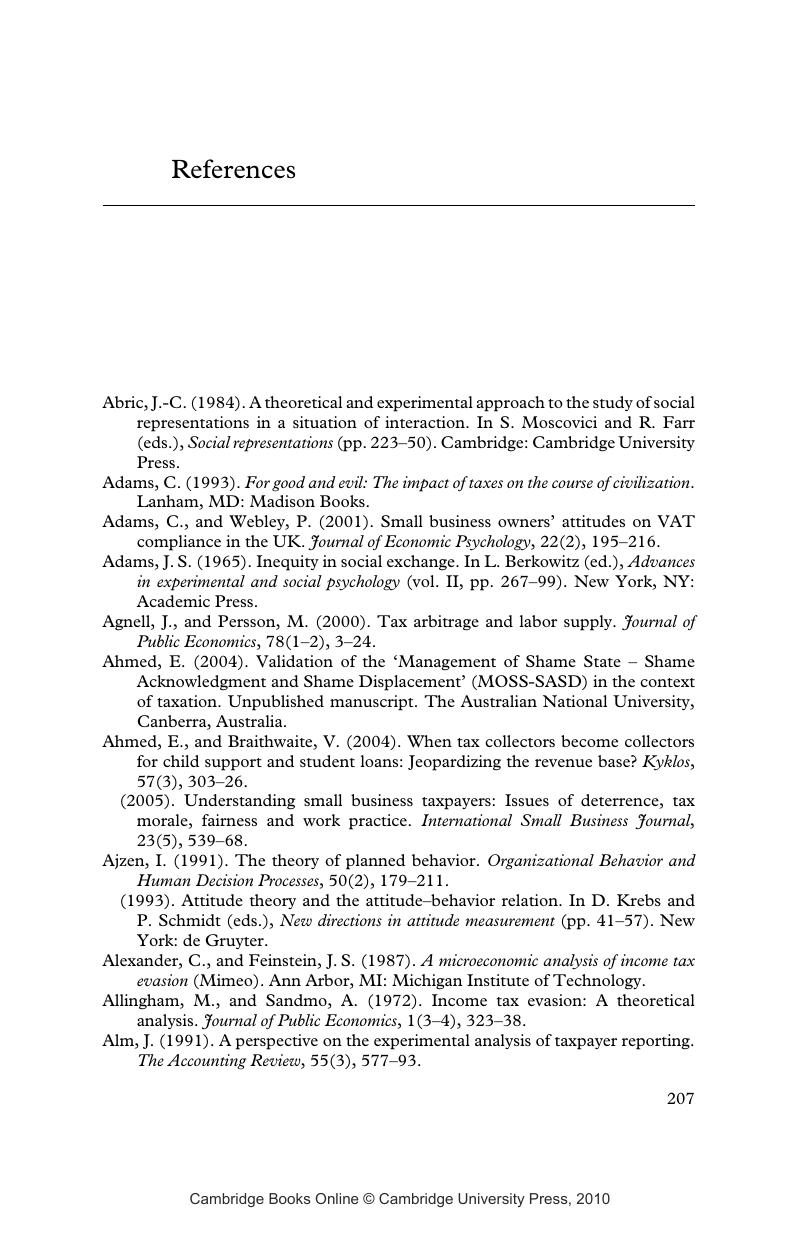Book contents
- Frontmatter
- Contents
- List of figures
- List of tables
- Foreword
- Preface
- 1 Introduction
- 2 Tax law, the shadow economy and tax non-compliance
- 3 Social representations of taxes
- 4 Tax compliance decisions
- 5 Self-employment and taxpaying
- 6 Interaction between tax authorities and taxpayers
- 7 Cautious conclusions
- References
- Index
- References
References
Published online by Cambridge University Press: 13 January 2010
- Frontmatter
- Contents
- List of figures
- List of tables
- Foreword
- Preface
- 1 Introduction
- 2 Tax law, the shadow economy and tax non-compliance
- 3 Social representations of taxes
- 4 Tax compliance decisions
- 5 Self-employment and taxpaying
- 6 Interaction between tax authorities and taxpayers
- 7 Cautious conclusions
- References
- Index
- References
Summary

- Type
- Chapter
- Information
- The Economic Psychology of Tax Behaviour , pp. 207 - 232Publisher: Cambridge University PressPrint publication year: 2007

